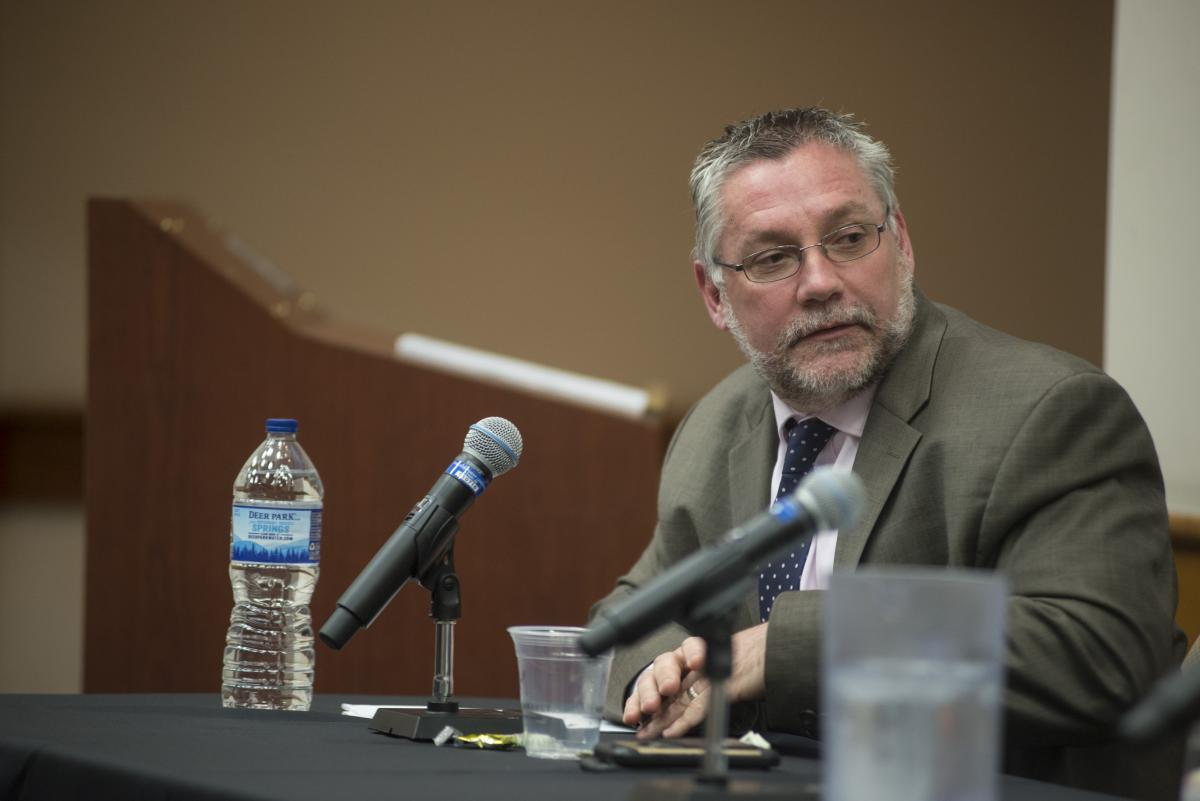
Smith student Philip Peker ’18 writes about the Third Annual Real Life Real Talk Conference, held on April 6, 2017, at the University of Maryland’s Robert H. Smith School of Business.
While many universities prepare students for a job, or even a career, most college programs, independent of major, gloss over subjects such as personal finance, savings, retirement, and the art of negotiation. To many, these seem like vague concepts that cannot be taught, but to a business school like Smith that has built a reputation on innovating and disrupting the status quo, filling in these gaps in education is a duty it owns to its students.
When it comes to real life, Smith gives a real talk. On Thursday, April 6, Smith partnered with SECU for its Third Annual Real Life Real Talk Conference. This year, the conference was divided into two one-hour sessions; the first focused on “Negotiating a Job Offer” and the second discussed topics related to “Financial Planning and Retirement.” In addition, this year was the first year that not only juniors and seniors could attend, but underclassmen too.
The event started off on a celebratory note; it was Carmen Mirabile’s birthday, who is the VP of Marketing at SECU, and his coworkers had the students join in on singing a very impromptu, yet all the more exciting, “Happy Birthday.” Joining Carmen on the panel was AVP of Human Resources Harry Florio, VP of Lending Toby Smith, and Financial Center Manager at the College Park Branch Cassie Costin. Sitting alongside the SECU team was Jamie Ryan, Client Advisor at SunTrust Bank. Together, this team of five guided the conversation over the course of the evening, fielding questions and debunking myths with fair doses of clarity and enthusiasm.
The discussion began with the topic of offer negotiation, specifically, one’s first job offer. For most, the moment you lock down your first job represents a culmination of all the hard work you put in and sleepless nights you put in throughout your college career. It was all worth it for this moment. A job offer is not just given, it is earned, and because you earned it, you have the right to get the most out of the offer. Many students shy away from negotiating the offer as they believe it reflects poorly on them, especially as young professionals just getting the footing in the workforce. Harry Florio, a human resources professional, made it a point to debunk this myth. “As an HR manager, many times I’m looking for future employees to negotiate benefits, because it tells me they care. Not negotiating, not asking any questions, is actually a red flag for me,” states Harry. However, a negotiation like this can only bring good things if there is a good rapport established between the recruiter and the potential employee. It is important to be able to identify when you are negotiating appropriately, or when you are stepping out of line and pushing too much. The best way to hedge your bets is to get to know the person behind all the email chains and phone calls that brought you to this critical point, so when you do negotiate, they empathize with you rather than prepare to go into battle with you.
The conversation then cascaded into the topic of benefits. Questions like “what benefits should I expect from my employer?”, “how do benefits vary from small companies to large companies?”, and “is salary the most important factor?” were all debated and discussed. One overarching theme that had all the panelists in agreement was the importance of culture. The panelists mentioned how before coming to SECU, they worked for bigger and more well-known companies, but amidst the allure of higher pay, there was something missing for them. Toby Smith took a 25 percent salary drop and came to SECU because he saw how rare and valuable the family-style, close-knit community is at SECU. “Finding a place that understands you, works with you, and helps you grow is the hardest but the most important thing.” For many students, benefits are equated with salary, but the panelists stressed the importance of looking beyond the paycheck, and realizing that being happy at a job is dependent on so many more factors than just money, and culture is one of the bigger ones.
Session 1 was followed by a short but much-needed pizza party break. After the students, panelists and event organizers refueled, Session 2 commenced swiftly. There was a volley of financial planning topics thrown at the panelists, from “When should I start saving for retirement?” to navigating the differences between a 401k versus an IRA. Each panelist added a fresh perspective on the questions posed. Session 2 contrasted the more subjective, lifestyle-centered themes of Session 1 by being more technical and objective.
“As someone who will be graduating in a little over a year, ‘Real Life Real Talk’ really helped me understand some of the strategies I can use during the job seeking and recruitment process,” junior finance and marketing double major Bobby Elliot told me. From types of benefits, to internal networking, from debt to planning for retirement, this year’s “Real Life Real Talk Conference” gave students a poignant introduction to what life after college looks like beyond job and the paycheck.
For more information about the Smith Undergraduate program, visit: www.rhsmith.umd.edu/undergrad.
Media Contact
Greg Muraski
Media Relations Manager
301-405-5283
301-892-0973 Mobile
gmuraski@umd.edu
About the University of Maryland's Robert H. Smith School of Business
The Robert H. Smith School of Business is an internationally recognized leader in management education and research. One of 12 colleges and schools at the University of Maryland, College Park, the Smith School offers undergraduate, full-time and flex MBA, executive MBA, online MBA, business master’s, PhD and executive education programs, as well as outreach services to the corporate community. The school offers its degree, custom and certification programs in learning locations in North America and Asia.